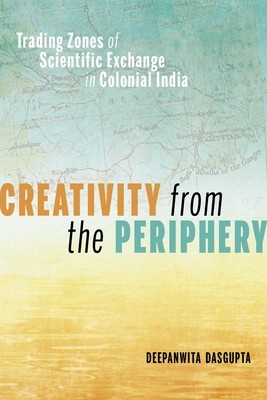
- We will send in 10–14 business days.
- Author: Deepanwita Dasgupta
- Publisher: University of Pittsburgh Press
- ISBN-10: 0822946564
- ISBN-13: 9780822946564
- Format: 16 x 23 x 2.6 cm, hardcover
- Language: English
- SAVE -10% with code: EXTRA
Reviews
Description
Science is usually known by its most successful figures and resource-rich institutions. In stark contrast, Creativity from the Periphery draws our attention to unknown figures in science--those who remain marginalized, even neglected, within its practices. Researchers in early twentieth-century colonial India, for example, have made significant contributions to the stock of scientific knowledge and have provided science with new breakthroughs and novel ideas, but to little acclaim. As Deepanwita Dasgupta argues, sometimes the best ideas in science are born from difficult and resource-poor conditions. In this study, she turns our attention to these peripheral actors, shedding new light on how scientific creativity operates in lesser-known, marginalized contexts, and how the work of self-trained researchers, though largely ignored, has contributed to important conceptual shifts. Her book presents a new philosophical framework for understanding this peripheral creativity in science through the lens of trading zones--where knowledge is exchanged between two unequal communities--and explores the implications for the future diversity of transnational science.
EXTRA 10 % discount with code: EXTRA
The promotion ends in 20d.01:43:18
The discount code is valid when purchasing from 10 €. Discounts do not stack.
- Author: Deepanwita Dasgupta
- Publisher: University of Pittsburgh Press
- ISBN-10: 0822946564
- ISBN-13: 9780822946564
- Format: 16 x 23 x 2.6 cm, hardcover
- Language: English English
Science is usually known by its most successful figures and resource-rich institutions. In stark contrast, Creativity from the Periphery draws our attention to unknown figures in science--those who remain marginalized, even neglected, within its practices. Researchers in early twentieth-century colonial India, for example, have made significant contributions to the stock of scientific knowledge and have provided science with new breakthroughs and novel ideas, but to little acclaim. As Deepanwita Dasgupta argues, sometimes the best ideas in science are born from difficult and resource-poor conditions. In this study, she turns our attention to these peripheral actors, shedding new light on how scientific creativity operates in lesser-known, marginalized contexts, and how the work of self-trained researchers, though largely ignored, has contributed to important conceptual shifts. Her book presents a new philosophical framework for understanding this peripheral creativity in science through the lens of trading zones--where knowledge is exchanged between two unequal communities--and explores the implications for the future diversity of transnational science.


Reviews